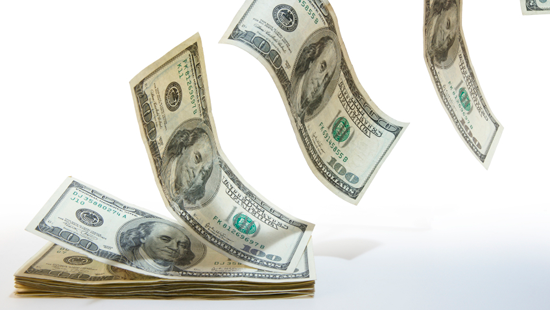
June-July 2013
God's Hands
------------------
|

brown on green, A Regular column about finances
How to Lose Money
Investing for the long term requires you to be prepared to lose money. All long-term investors have a negative year at some point. How you react to negative returns will severely impact your overall return over a long period of time. Many people panic at the first sign their portfolios are losing money and revert to cash until it is “safe” to go back into stocks. Numerous studies have shown that these “market timers” who constantly try to predict the right time to enter and exit the market have much lower returns than those who just hold on and ride out the ups and downs.
It is important, however, to have a portfolio diversified across industries, types of investments, and even geographic locations. No particular type of investment is always positive. No industry is always at the top. A diversified portfolio allows you to have some of your money in each industry, investment type, and region of the world so when one investment falters, another will be doing well and will stabilize the portfolio.
It is important to determine your investment goals and risk tolerance. Portfolios can be designed to meet short, medium, or long-range goals. Adjustments in the investments can be made to reflect your risk tolerance. However, someone with a low risk tolerance must understand they will not achieve the highest returns. Any investment that involves the stock market will lose money from time to time, even those with a low tolerance for risk.
During a complete market meltdown like the one that occurred in 2008, there is no place to hide as all types of investments declined. Still, over its history, the S&P 500 has had 13 negative years and 42 positive years. This averages a down year every four years. Every investor will experience years when money is lost on investments. However, studies make it clear that the best option is a well-diversified portfolio that meets your risk tolerance and rides out the storm.
A careful look at the history of the S&P 500 reveals that most of the time, when the index had a negative year it recovered within two years. At press date, the S&P 500 is nearing an all-time high. It’s easy to know what to do when you are making money. The hard part is learning how to lose money and still come out ahead.
Up or Down? You Be the Judge...
The Standard and Poor 500 (S&P 500) was started in 1957. Before then, it was known as the S&P 90 and, as its name implies, had 90 stocks instead of 500. The S&P 500 is considered a better barometer of the stock market as a whole than the Dow.
Since 1957, the index has had 13 negative years or about every 4 years. Here is its history over the decades:
-
1957-1966 Three negative years
-
1967-1976 Three negative years
-
1977-1986 Two negative years
-
1987-1996 One negative year
-
1997-2006 Three negative years
-
2007-present One negative year (but it was a bad one in 2008 at -37%)
Negative Five-Year Rolling Averages -
�Five (2000, 2001, 2002, 2008, 2011)
Negative Ten-Year Rolling Averages -
Two (2008, 2009)
David Brown, CPA, became director of the Free Will Baptist Foundation in 2007. Send your questions to David at david@nafwb.org. To learn how the Foundation can help you become a more effective giver, call 877-336-7575.
|
|

